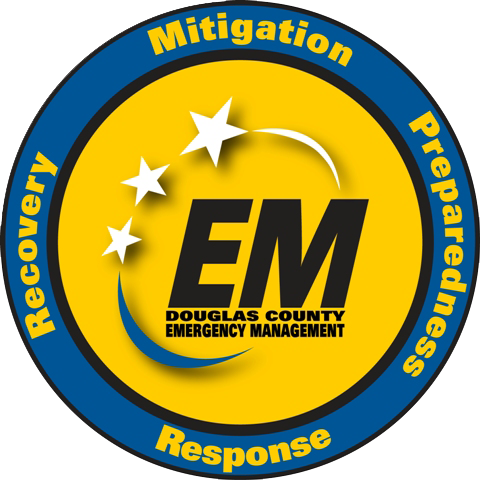Emergency Management
Lightning and Thunderstorms
Lightning and thunderstorms can be beautiful and exciting to watch, but it's important to know when you stop watching and seek a safe shelter. This page will provide information and safety tips for lighting and thunderstorms.
Lightning Facts
- Lightning is fascinating to watch but also extremely dangerous. In the United States, there are about 25 million lightning flashes every year. Understanding the dangers of lightning is important, so that you can get to a safe place when thunderstorms threaten. If you hear thunder--even a distant rumble or a crackling aloft--you are already in danger of becoming a lightning victim.
- Lightning is an electrical discharge that results from the buildup of positive and negative charges within a thunderstorm. When the buildup becomes strong enough, lightning appears as a “bolt”. This flash of light usually occurs within the clouds or between the clouds and the ground. A bolt of lightning reaches a temperature approaching 50,000 degrees Fahrenheit (5 times hotter than the surface of the sun) in a split second. The rapid heating and cooling of air near the lightning causes thunder.
- Lightning bolts can strike up to 10 miles from their parent cloud into areas with blue skies. This is called a Bolt from the Blue.
- How far away is the thunderstorm? Count the number of seconds between a flash of lightning and the next clap of thunder. Divide this number by 5 to determine the distance to the lightning in miles.
Lightning Safety and the 30 / 30 Rule
It's important to know when you should stop outdoor activities due to lightning in the area. You should know that it doesn't have to be raining for you to be struck by lightning as lighting can strike up to 10 miles away from the parent thunderstorm.
30 / 30 Rule
If after seeing lightning, you cannot count to 30 before hearing thunder, go indoors!
Stay indoors for 30 minutes after hearing the last clap of thunder.
Safe Shelters
A safe shelter from lightning is either a substantial building or a enclosed metal vehicle. A safe building is one that is fully enclosed with a roof, walls and floor, and has plumbing or wiring. Examples include a home, school, church, hotel, office building or shopping center.A safe vehicle is any fully enclosed metal-topped vehicle such as a hard-topped car, minivan, bus, truck, etc. While inside a safe vehicle, do not use electronic devices such as radio communications during a thunderstorm.
Once inside, stay away from showers, sinks, bath tubs, and electronic equipment such as stoves, radios, corded telephones and computers.
Unsafe Shelters
Unsafe buildings include car ports, open garages, covered patios, picnic shelters, beach pavilions, golf shelters, tents of any kinds, baseball dugouts, sheds and greenhouses. Unsafe vehicles include golf carts, convertibles, motorcycles, or any open cab vehicle.
Thunderstorm Facts
A thunderstorm is formed from a combination of moisture, rapidly rising warm air and a force capable of lifting air such as a warm and cold front, a sea breeze or a mountain. All thunderstorms contain lightning. Thunderstorms may occur singly, in clusters or in lines. Thus, it is possible for several thunderstorms to affect one location in the course of a few hours.
Did You Know?
- At any given moment, nearly 1,800 thunderstorms are in progress over the surface of the earth.
- On average, the United States gets 100,000 thunderstorms each year. Approximately 1,000 tornadoes develop from these storms.
- Large hail results in nearly $1 billion in damage to property and crops.
- Straight-line winds exceeding 100 mph are responsible for most thunderstorm damage.
While thunderstorms can produce tornadoes, they can also produce flooding, flash flooding, and damaging hail and winds.
